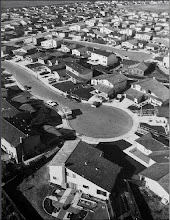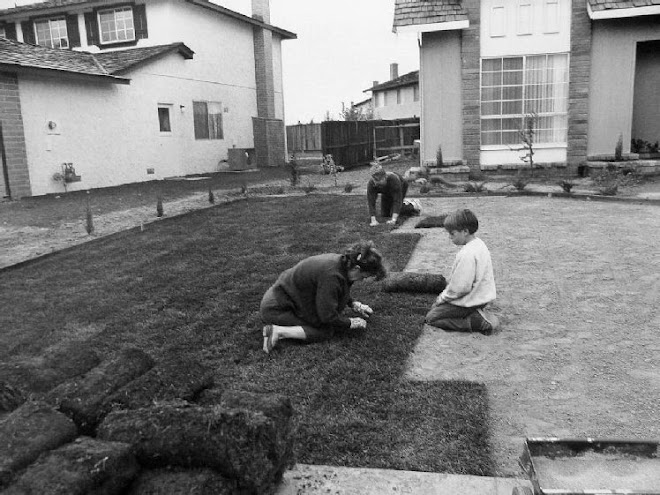
If one could see the history of the development of a city, one would learn that all cities were once suburbs, and all suburbs were once small towns. But how do these changes come about. What moves a town to become a suburb? What effects a suburb to turn into a city? Towns obviously grow in population to become suburbs. Industry and construction create growth in suburbs so that eventually they become cities. In Michael Allen’s “Neighborhood and Industry” the metamorphosis of a suburb into a city is depicted, however, the negative effects of this change take emphasis in the image.
Allen uses a handful of lackluster colors in his painting to create a melancholy mood. They correspond to the pollution coming out from the industry, which is nearly invisible due to the smoke expectorating from itself. Even the sun is barely visible in the sky. Allen uses a long, gray road to lead the viewer deep into the painting’s background of an industrial site. The road seems to represent the unfortunate and devastating pathway of suburbs turning into cities, and the increase of pollution.
The focal point seems to be the industry in the background. The one point perspective takes the viewer’s eye to the horizon line where the industry rests. The foreground of the painting is mostly the dark road (which is noticeably lighter in the neighborhood section of the painting). The homes of the suburb peak through at the sides of the piece of work but are not fully seen, almost as if they are slowly being pushed out of the image due to the growing industry, looming in the back.
The only bright color that contrasts with the dull painting comes from the stop sign, centered in the painting. If it were not for its size, it would appear as the focal point. It appears as though Allen is telling viewers to stop, like a warning. Stop industrializing, stop polluting suburbs. Do not stretched this industry past this point. Michael Allen’s message looms in the dull paint and the melancholy tone of his painting, “Neighborhood and Industry”.
Allen uses a handful of lackluster colors in his painting to create a melancholy mood. They correspond to the pollution coming out from the industry, which is nearly invisible due to the smoke expectorating from itself. Even the sun is barely visible in the sky. Allen uses a long, gray road to lead the viewer deep into the painting’s background of an industrial site. The road seems to represent the unfortunate and devastating pathway of suburbs turning into cities, and the increase of pollution.
The focal point seems to be the industry in the background. The one point perspective takes the viewer’s eye to the horizon line where the industry rests. The foreground of the painting is mostly the dark road (which is noticeably lighter in the neighborhood section of the painting). The homes of the suburb peak through at the sides of the piece of work but are not fully seen, almost as if they are slowly being pushed out of the image due to the growing industry, looming in the back.
The only bright color that contrasts with the dull painting comes from the stop sign, centered in the painting. If it were not for its size, it would appear as the focal point. It appears as though Allen is telling viewers to stop, like a warning. Stop industrializing, stop polluting suburbs. Do not stretched this industry past this point. Michael Allen’s message looms in the dull paint and the melancholy tone of his painting, “Neighborhood and Industry”.







No comments:
Post a Comment